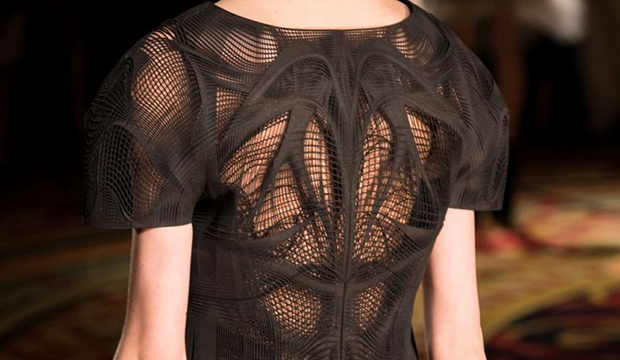

Image via OpenWear.org
It is interesting to reflect on how rapidly the technology that we could only have dreamed about a decade ago has come to fruition…
Just a couple months ago, five-year old Liam living in South Africa received a series of prosthetic hands created using open source software and 3D-printing technology. Designed by the unlikely duo of an African woodworker and a prop designer from Seattle, Washington, for the surprisingly low cost of $150, to say that this “do-it-yourself” technology has anything but irrevocably changed Liam’s life would be a gross understatement.
With such technological advancements becoming a tangible reality, it’s easy enough to envision a future where instantaneous-creation and gratification are within reach for anyone with access to the necessary technology.
The fashion industry is no different.
From powerful CEO’s to top designers, the fashion industry’s most influential names are working hard to convince us that fashion and progress are by no means mutually exclusive.
The internet has made accessibility the name of the game and technological innovation, as far as the fashion world is concerned, “trendy”.
Yet, the fashion industry’s engagement in what appears to be a tech “arms race” raises an important question:
At what point will the push for technological innovation and towards unlimited accessibility overrun creativity within the fashion industry?
The possibilities of 3D printing for burgeoning accessibility within fashion are far from undiscovered. The technology has been used in the past to help conceptualize and share a designer’s vision, but more recently has entered the “finished product” arena with talk of manufacturing 3D-eyewear.
Still, perhaps any immediate concern over technology like 3D printing posing a significant threat to creative industries like fashion is premature.
The technology is still relatively in its infancy and few have access. It’s not as though tomorrow, when we wake up dissatisfied with our wardrobes, we could print a silk DVF wrap dress and a pair of Tory Burch flats before running out the door for work.
However, the issue of accessibility is significant and something that the fashion industry should be mindful of for primarily two reasons.
First, unlimited access raises obvious red flags when it comes to intellectual property and privacy. It’s not difficult to imagine that technology like 3D printing will inspire theft and create endless legal headaches for brands and designers, when effectively anyone can steal a design and reprint it from the comfort of their own home. If we are not cautious, 3D printing could be the next generation’s version of Napster and the controversy over illegally downloaded music, foresee-ably fueling a black market for illegally-printed products.
Second, somewhat echoing my original question, we have to wonder to what extent accessibility already discourages creativity and designers generally, or ideas from inception. Does our focus on the former and our obsession with progress blind us to imaginative innovation when it comes to the latter?
Maybe it’s time to step back, rethink how we define innovation and how much we value being in control. When so much of fashion exists in originality, uniqueness, and exceptional-ism, what is to become of the industry and its designers if we continue to open everyone’s access to creating all stages of the process on their own?
Something for reflection . . .
